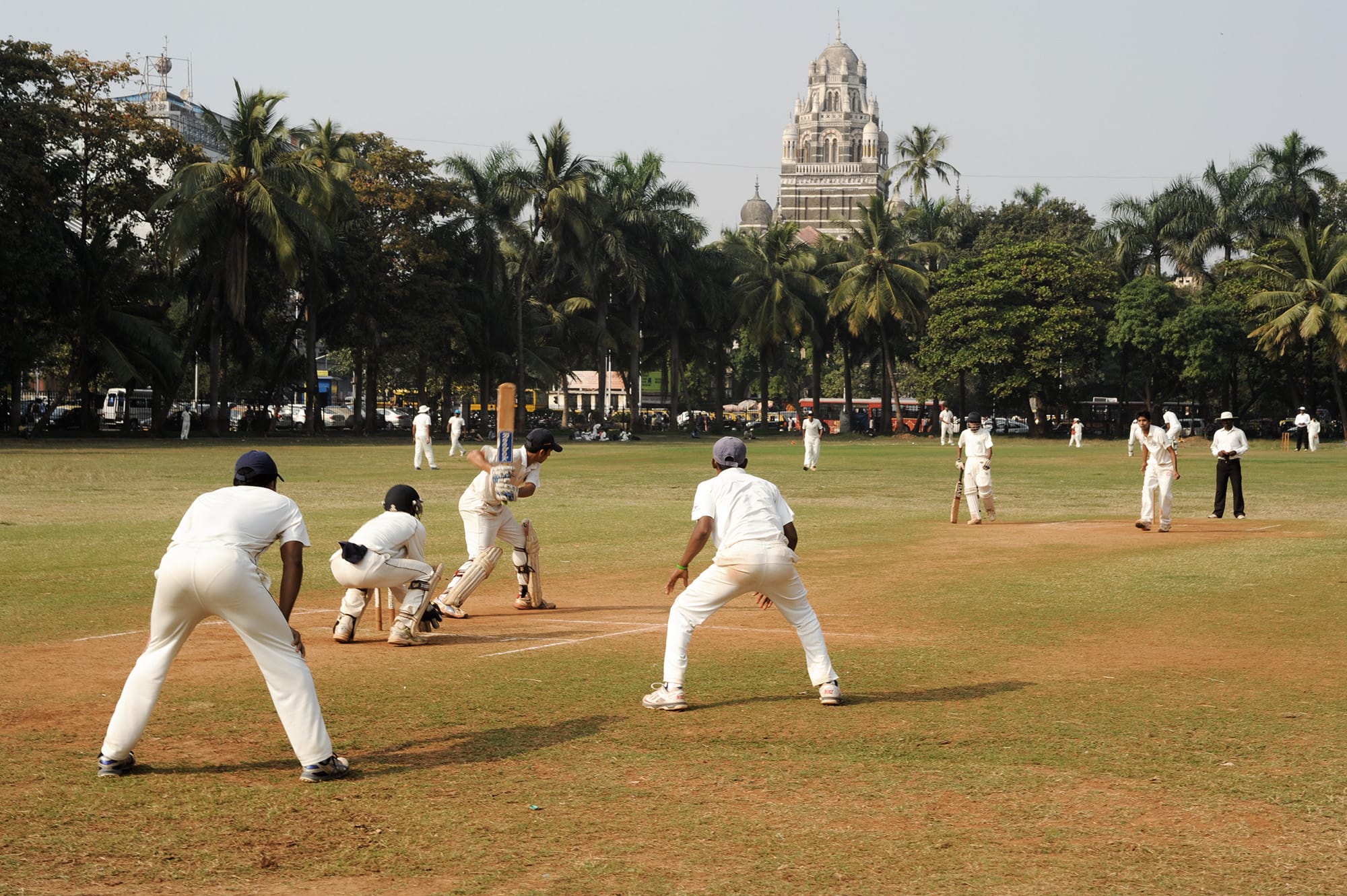
A brief history of the Maidan in Mumbai
Having been the nursery ground for many of India’s biggest cricket stars, most notably Sunil Gavaskar and Sachin Tendulkar, the Maidan in Mumbai has long been considered the heartbeat of Indian cricket. Back in the colonial India of the late nineteenth century, when it was the Bombay Maidan, it was the birthplace of Indian’s passion for cricket.
Today, the Maidan is a collection of cricket grounds, sports clubs and green space, surrounded by the madness of modern Mumbai and a Ben Stokes throw from the Wankhede Stadium. In the nineteenth century, it was a much more tranquil and more singular playing field, used by high society ‘Europeans’ and ‘Natives’, mainly to play cricket (some things never change). For any cricket lover on a holiday to India, a visit to the Maidan is an absolute essential.
In 1877 the European members of the Bombay Gymkhana were challenged by the Parsis of the Zoroastrian Cricket Club to a two-day match. Needless to say, the Europeans were expecting an easy victory but after conceding a first innings, the game finished in a draw. After a dispute over the Europeans using the maidens to play Polo, making cricket all but impossible, this yearly challenge started gaining in popularity across the city and became known as the Presidency Match, with the 1892 version generally considered as the first 1st class match in India.
By the early twentieth century, the Hindu Gymkhana team was increasing in quality and eager to join the fun. Initially spurned by the Parsis, the Europeans agreed to the challenge and were soundly beaten by the Hindus, inspired by Palwankar Baloo. Baloo was a great left-arm spinner who overcame the odds of being an ‘untouchable’ to become the first great Indian spinner.
The Presidency Match became the Bombay Triangular in 1907 and when the Muslims joined in 1912, the Bombay Quadrangular. Before long, the Gymkhanas were recruiting players from across India to play in the tournament and other cities were copying the format. The Indian obsession was born.
Generating huge crowds at the matches and media interest right across India, the tournament became a key battleground for Gandhi and his campaign for home rule in the 1920s and 30s. Opposed to the religious make-up of the teams, he argued it was part of Britain’s divide and conquer strategy. Either way, religious tensions increased across India and the tournament was no different, being cancelled for four years from 1930.
The cricket enthusiasts of Bombay were delighted when it returned and by 1937, ‘The Rest’ had joined to make it the Bombay Pentangular and the now famous old Brabourne Stadium was built as the new sparkling home of Indian cricket.
As Indian independence approached, the newly formed BCCI decided in 1946 to abandon the tournament to create the India wide and state-based Ranji Trophy. Bombay had to share the game with the rest of India but it has never had to share its position as the heartland of Indian cricket.
CURIOUS ABOUT CRICKET IN INDIA?
What better way to experience the Maidan in Mumbai, and other aspects of Indian love of cricket, than on the England cricket tour to India in 2021?
Experience Travel Group design bespoke holidays to Asia for curious travellers. You can head to the Experience Travel Group website to explore our kind of travel in a little bit more depth.

